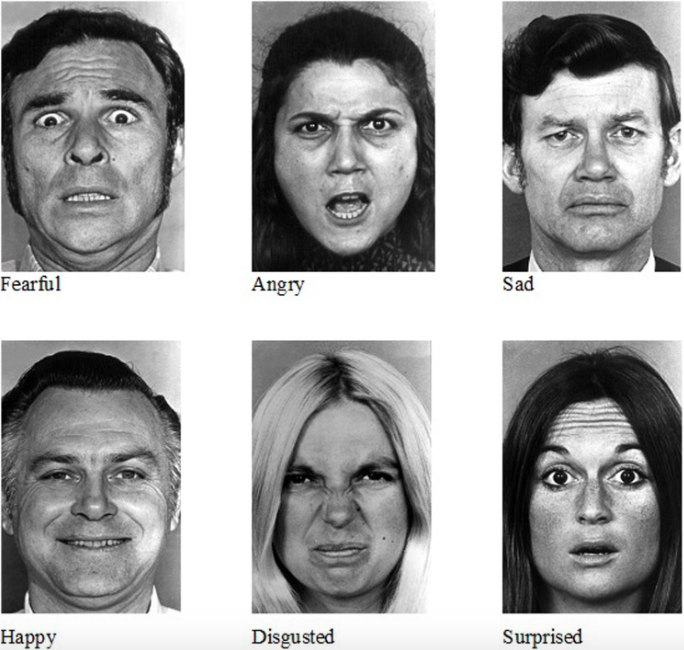|
With the crisp October air comes haunted houses and scary movies. Some of us enjoy feeling scared, while others do not. But what if we didn't feel afraid at all when watching a scary movie? It might be hard to imagine, but this is the case for a woman called S.M. S.M. has Urbach-Wiethe disease, a rare genetic disorder that caused damage to her amygdala. The amygdala is an almond-shaped structure located in the temporal lobe that plays a role in functions such as emotion and memory. Despite damage to her amygdala, and her resulting fear impairment, S.M. scores within the normal range on intelligence, memory, and language tests. Scientists have studied S.M. since the 1990s to learn more about the neural mechanisms underlying fear. One of the first studies with S.M. involved classifying facial expressions. S.M. was shown different facial expressions (happy, sad, fearful, surprised, disgusted, angry, and neutral) and had to rate the intensity of each expression according to various emotional adjectives (happy, sad, disgusted, angry, afraid, surprised, aware, sleepy, and interested) on a scale of 0 - 5. S.M.’s ratings of fearful facial expressions correlated poorly with those made by healthy controls and patients with brain damage unrelated to the amygdala. This suggests that S.M. had trouble recognizing fearful expressions. It’s important to note that her impairment was not due to an inability to recognize faces in general; S.M. had a perfect score when she had to identify individuals in photographs. Figure 1. An example of different facial expressions similar to the photons that S.M. was shown. These pictures are from the Ekman-Friesen Pictures of Facial Affect. In another experiment, researchers investigated whether scary environments and stimuli could make S.M. afraid. They brought her to a haunted house and to a pet store, where she met snakes and spiders, to see how she reacted. Yet, S.M. was curious instead of scared. Instead of screaming, she reacted to the actors in the haunted house by laughing and smiling. In fact, S.M. even scared one of the actors when she poked his costume to see what it was made of! She led her group through the haunted house and held snakes in the pet store without hesitation. Throughout these experiences, S.M. said she felt minimal fear, but was very excited and curious. In another attempt to observe whether S.M. could experience fear, the researchers also showed S.M. clips from scary movies. Unsurprisingly, she reported no fear when watching these videos. Throughout these experiments however, it was clear that S.M. understood the concept of fear since she was able to realize that others may experience fear in response to these things even if she did not.
Why is S.M. unable to feel afraid when she is confronted with scary images and environments? Scientists hypothesize that S.M.’s amygdala damage interrupts the neural circuitry that triggers the fear response when humans are faced with scary or threatening things in the environment. This circuit includes regions such as the brainstem and hypothalamus, and damage to the amygdala can prevent communication between these regions. This damage prevents scary things in our environment from evoking a fear response. Interestingly, this does not mean that S.M. can never feel fear. Previous findings in animal studies have found that inhaling carbon dioxide (CO2) can also trigger a fear response. When S.M.participated in a similar experiment and inhaled CO2, she and two other patients with amygdala damage reported feeling afraid. All three patients even had panic attacks triggered by the CO2! S.M.’s ability to feel fear in this study is likely due to CO2 inhalation activating different sensory pathways and brain regions than ones activated by the external events that were used in previous experiments. Taken together, it seems that there are multiple pathways for evoking a fear response, with the type of stimuli determining which pathway is activated. So, the next time you’re watching a scary movie and you feel afraid, you can blame your amygdala! Written by Stephanie Edited by Roni References Adolphs, R., Tranel, D., Damasio, H., & Damasio, A. (1994). Impaired recognition of emotion in facial expressions following bilateral damage to the human amygdala. Nature, 372(6507), 669-672. Ekman, P., and Friesen, W. V. (1976). Pictures of Facial Affect. Palo Alto, CA: Consulting Psychologists Press. Feinstein, J. S., Adolphs, R., Damasio, A., & Tranel, D. (2011). The human amygdala and the induction and experience of fear. Current Biology, 21(1), 34-38. Feinstein, J. S., Buzza, C., Hurlemann, R., Follmer, R. L., Dahdaleh, N. S., Coryell, W. H., ... & Wemmie, J. A. (2013). Fear and panic in humans with bilateral amygdala damage. Nature Neuroscience, 16(3), 270.
1 Comment
Inderdeep Singh Khanuja
1/30/2024 06:09:39 am
Thank you for providing such an informative and engaging blog post. I enjoyed reading your insights and the way you presented the information. <a href="https://youtu.be/oFd_wHmC0lI" target="_blank">click here</a> to dive deeper into this topic.
Reply
Leave a Reply. |
LINKS FOR TEACHERS
AuthorLearn more about our bloggers on the "Meet Our Team" page. Archives
May 2022
Categories
All
|
|
Return to home page
|
Go to BrainReach Montreal/ Mission Cerveau
|

 RSS Feed
RSS Feed





